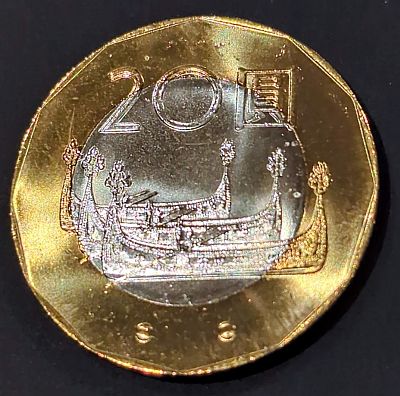Tag: Japan
-

1915 Japan 5 Rin
A beautiful early, low-denomination milled Japanese coin. This is my entry for Day 10 “J” of the Blogging from A-Z April Challenge!J = Japan. Taishō era 1920 photo with a view of the Mitsubishi headquarters in Marunouchi, looking towards the Imperial Palace, from Wikipedia. The Meiji restoration of 1870 saw Japan move from a pre-industrial, feudal…
-

2001 Taiwan 20 New Dollars
A coin, and article, which encouraged me to learn more about the history of Taiwan. Taiwan At its closest, Taiwan is 130 Kilometres (81 Miles) off the coast of mainland China. Taiwan is 1,200km (750 miles) north of the Philippines, and 2,200km (1350km) south-west of Japan and the Korean peninsula. Tension between China and Taiwan…
-

Japan 4 Mon 1768-9
Japan used a standard currency of “Mon” coins from the “Muromachi” period in 1336, until the early “Meiji” period in 1870. These periods are named after the shogun (emperor, or ruling family) of the time. These were cast round coins with a square hole, not dissimilar from Chinese “Cash” coins, such as this Northern Song…
-

Japan 100 Mon
Japan used similar brass coins to China for many centuries. The coins were round with a square hole, and four characters on the obverse. The Japanese coins were known as “Mon”. In the 1800s, larger coins up to 100 Mon were produced. Rather than simply scale up the coin and make it larger, the 100…

